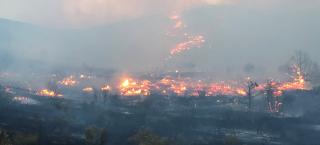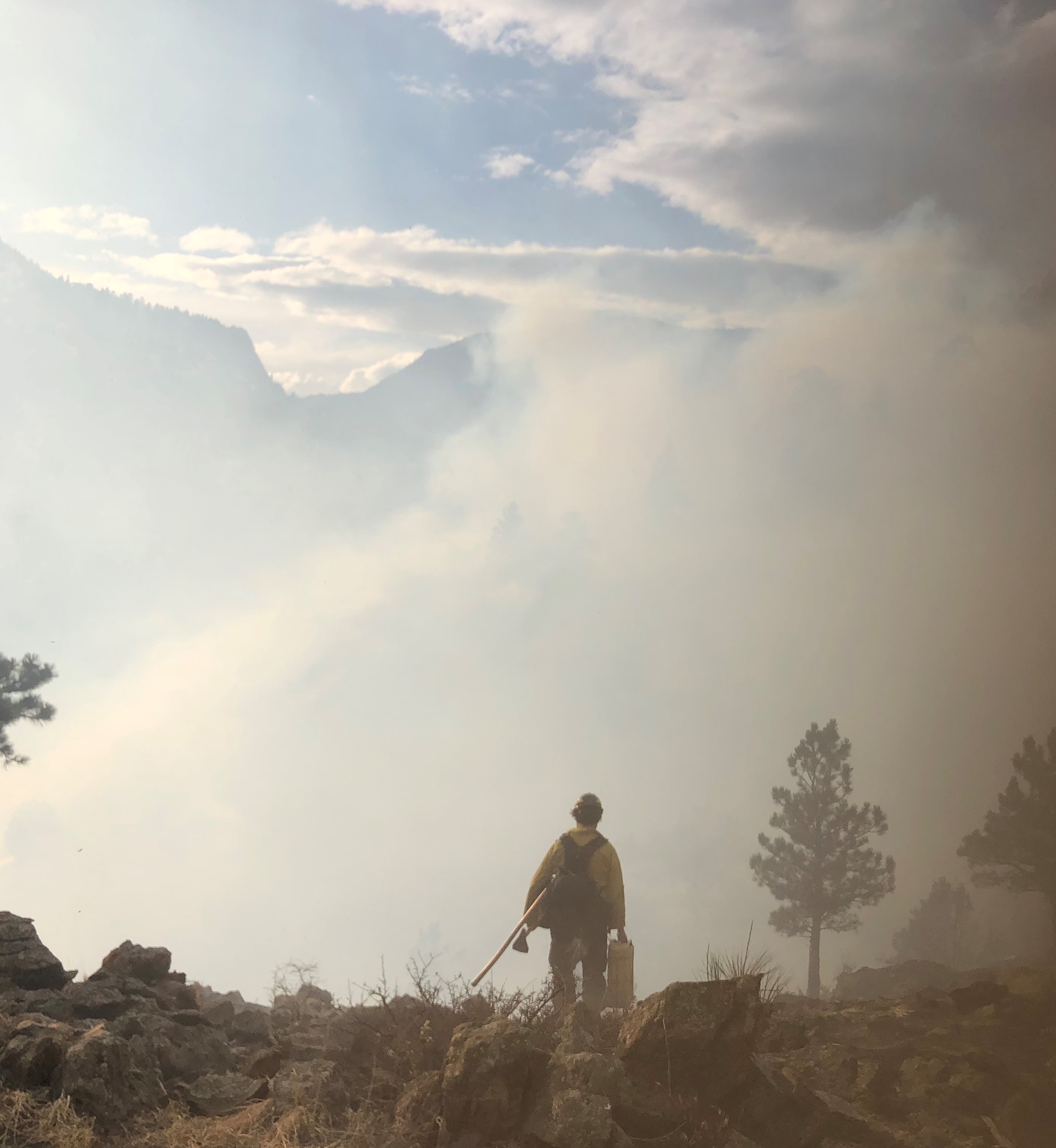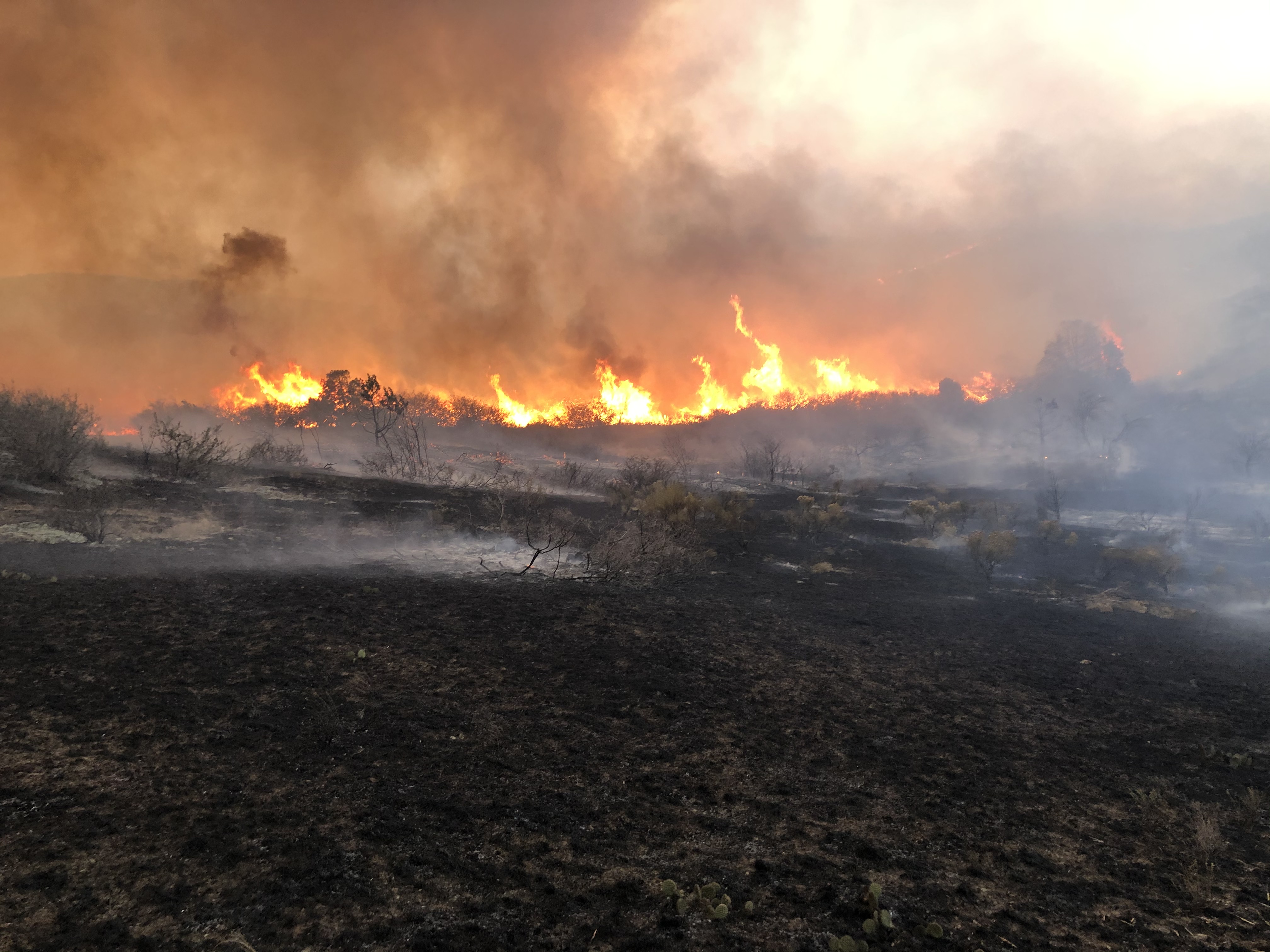
Story
Burning Truth: The Beginning of the End for Colorado’s Forests
In 2020, three Colorado wildfires consumed a combined total of more than half a million acres—dwarfing what had previously been the state’s most destructive fire seasons. It should have been an alarm heard throughout the West, even worldwide. The lessons were right there to be learned. And yet . . .
Editor’s Note: How will 2020 go down in history? In the Hindsight 20/20 project from The Colorado Magazine, twenty of today's most insightful historians and thought leaders imagine themselves in 2120, looking back on 2020 and sharing their visions of how that year will stand the test of time.
Now that 2120 has crashed down upon us, I feel compelled to use this centennial as an opportunity to look back, if not coolly then with as little prejudice as possible, on what could have—should have—happened as Coloradans of that bygone age sought to heal from the ravages of one of the most infamous years in modern history.
Since my space is limited, I will leave it to my colleagues to address Covid-19, the inequalities it exacerbated, the contending struggles for racial justice and white supremacy, the enduring puzzles of Trumpism, and the rise of what some call a “post-truth” mentality. Instead, I want to reflect on the lessons that I so dearly wish twenty-first-century Coloradans had taken from the worst wildfire season our state had yet experienced.

Thousands of wildland firefighters were needed to help contain the historic fires around Colorado in 2020.
Several huge fires hit Colorado in the late 1800s, but modern record-keeping only began in the early 1900s. Prior to the 1960s, even this information remained spotty and anecdotal. Though incomplete, this data shows that between the early 1900s and 1987, Colorado experienced just one fire larger than 10,000 acres. Between 1988 and 2002, eleven such fires broke out. The Hayman Fire of 2002 established many milestones; at 137,760 acres, it was easily the largest Colorado had experienced since the late 1800s. Despite heavy fire seasons in 2011–13 and 2016–18, Hayman remained the largest in state history until 2020, when it was superseded by three blazes that collectively razed more than half a million acres.
The sharply upward trend in the severity and destructiveness of wildfires in Colorado—and California, Australia, and many other places—seemed unmistakable. Experts rightly emphasized the complexity of the dynamics, involving the legacies of fire suppression, rising human populations in the urban-wildland interface, and other factors. Many Coloradans, however, remained unwilling to accept the inconvenient truth: climatic changes caused by the extraction and consumption of fossil fuels, methane emissions, and other human activities had become the main driver of fuel conditions and fire-season weather in the state as in every other reach of the planet. Dozens of scientific studies dating back to the 1990s had documented the clear impact of the state’s increasingly warm, arid climate on fuel loads, ignition potential, and the length of the fire season. Even after 2020, though, Coloradans showed that they were more deeply committed to life as they knew it than to safeguarding the environments they purported to love.

The Cameron Peak Fire was first reported on August 13, 2020. All told, the wildfire ravaged 208,913 acres of land and destroyed 461 structures before it was declared 100 percent contained on December 2, 2020. There had never been a fire larger than 100,000 acres in the state of Colorado prior to 2002.
We all know what happened next: Conflagrations became still larger and more frequent until they exhausted the available fuel. As Colorado’s remaining unburned lands became too small and fragmented to sustain massive fires, the sprawling forests that Coloradans had associated with the mountains were little more than memories.
The 2020 wildfires might have served as a clarion call that inspired a new birth of environmentalism—a rehabilitated version shorn of its NIMBYism and its blindness toward racial equality and social justice. Colorado in 2120 has become a sad incarnation of its former self because our forebears missed a clear opportunity to understand that the epidemiological, economic, racial, and environmental challenges that bore down on them from every side were inextricably interconnected.
More from the Hindsight 20/20 project in The Colorado Magazine
The Past is Present Every generation sees itself at the center of history, and Americans in 2020 were no different. But as time passed, many were disappointed to realize that change was less profound than they had hoped. Still, it might have been comforting to learn that they were part of a much longer effort to define their nation.
Our Strength is Our Union We've learned a lot (that we didn't want to know) about life during a global pandemic. Mark Earnest examines how a society enshrined one generation's learning so that it became durable for future generations to draw upon. A century later we consider: How long does a society retain the lessons we learn?
2020: Year of Destiny Though Americans in 2020 felt the weight every day of a global pandemic, in the end they endured. What was harder to appreciate at the time was the pandemic's long-lasting impact on American politics—and democracy itself.
